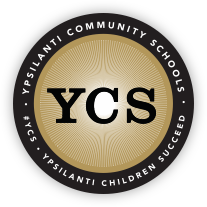
In This Issue:
1. Closing racial gaps
2. Implicit bias dealing with saggy pants
3. Psychological factors that perpetuate racism – and can be changed
4. Avenues to equity opened by Covid-19
5. Handling learning loss in the fall
6. School-based health services when schools reopen
7. Insights on remote instruction from college students
8. A poll of college educators on teaching during the pandemic
9. A teacher book study group that worked
10. Alternatives to three classic novels
11. Companion books to current movies
12. Short item: Oprah Winfrey's panel on race
Quotes of the Week
"It appeared that once people were forced to have anguished discussions about racial bias, they were able to overcome it."
Nicholas Kristof (see item #1)
"We're only unaware until we're aware."
Angela Duckworth in "What Teachers Should Know About Implicit Bias Right Now"
in Education Week, June 9, 2020
"Not so fast."
Superintendents and assessment experts on buying commercial diagnostic assessments
(see item #5)
"Meaningful bonds just cannot be made over Zoom."
Daniel Dolgicer in a letter to The New York Times, June 7, 2020, one of eight responding to the question, Does Working from Home Work?
"One does not learn how to be a citizen by studying processes, watching adults, or reading texts but, rather, by actively taking part in the work of citizenship."
Molly Andolina and Hilary Conklin in "Fostering Democratic and Social-Emotional
Learning in Action Civics Programming: Factors That Shape Students' Learning from Project Soapbox" in American Educational Research Journal, June 2020 (Vol. 57, #3, pp. 1203-1240); here's a link for information on Project Soapbox.
1. Closing Racial Gaps
In this New York Times article, Nicholas Kristof says citizen-recorded videos shine a glaring spotlight on existing problems, most powerfully with George Floyd's killing, which has created worldwide awareness. But what about social ills that can't be captured on video? asks Kristof – for example, differences in life expectancy by racial group, inequities in the quality of schools, and big disparities in health care. These systemic problems aren't caused by in-your-face racists, but they have daily consequences for millions of Americans.
Unconscious bias is one of the ways that people of color are disadvantaged. Kristof gives an intriguing example of "racism without racists" and how it can be changed. Researchers have found that in professional baseball games, white umpires are more likely to call strikes when the pitcher is white, as are black umpires with black pitchers. And in pro basketball, referees are more likely to call personal fouls on players of a different race. When this research was publicized, there was a lot of anger and painful discussion among professional athletes. A short time later, a follow-up study in the N.B.A. found that the biased calls by referees stopped happening. "It appeared," says Kristof, "that once people were forced to have anguished discussions about racial bias, they were able to overcome it."
Kristof also sees hope in the progress that's been made in recent years to narrow some racial disparities, and in the fact that we have the knowledge and resources to drastically reduce child poverty, which would be hugely beneficial. "What we lack isn't tools or resources," he concludes, "it's political will."
"What If There Were No George Floyd Video?" by Nicholas Kristof in The New York Times, June 7, 2020
2. Implicit Bias Dealing with Saggy Pants
In this Edutopia article, veteran administrator Kelly Wickham Hurst gives a vivid example of unthinking but pernicious bias in her high school. While Hurst was on hallway duty one morning, she heard a teacher berating Marcus, a black male student, for violating the dress code – his jeans were sagging, showing his underwear. The teacher summoned Hurst and demanded that the boy be taken to the discipline room to "fix" his behavior. As Hurst escorted Marcus down the hallway, he pointed out four other boys with sagging pants, all white, none of whom were being stopped by adults. "Are you going to get him, too, or is it just me?" asked Marcus. "What about him? He's sagging. I don't see anybody asking him to pick up his pants."
"As hard as it was for me to admit," says Hurst, "Marcus was right. Here was a policy that was written into our handbook, but the consequences for breaking it were not equitable for all students. I looked around and realized that the other teachers in the hallway were either ignoring the white boys who were sagging or were engaged in conversations with them. Not one of them stopped me the way the first one did to tell me to take those boys to the discipline office."
Hurst asked Marcus to wait outside the office and walked over to a white student with sagging jeans chatting with a teacher. "What's up with those pants, young man?" she asked. The teacher turned to the boy and said, "Look at you. Pull those up, would you?" As the boy complied, the teacher said to Hurst, "See? Wasn't that easy? All we have to do is ask them." There was no demand that the boy be taken to the discipline room.
Hurst walked back to Marcus, in tears. "Marcus, pull up your pants," she said. "Keep them up, please. Can I trust you to do that?" He was confused by the tears and amazed that he'd been asked nicely and that he wasn't going to be punished.
"Later that year," concludes Hurst, "when he graduated, he told me I was the first teacher to see him as a person and give him some dignity when correcting his behavior, and that he was grateful he didn't get suspended that day, because that's where his progressive discipline was headed."
"Biased Discipline at My School" by Kelly Wickham Hurst in Edutopia, December 7, 2016
3. Psychological Factors That Perpetuate Racism – and Can Be Changed
In this article in American Psychologist, Steven Roberts (Stanford University) and Michael Rizzo (New York University) disagree with the common definition of racism: disliking or mistreating others on the basis of race. Individual racist acts like those recently in the news are consequences of a larger system, say Roberts and Rizzo. Their definition of racism: "a system of advantage based on race that is created and maintained by an interplay between psychological factors (i.e., biased thoughts, feelings, and actions) and sociopolitical factors (i.e., biased laws, policies, and institutions)... so deeply embedded within U.S minds and U.S. society that it is virtually impossible to escape." People are not born racist, they say; people become racist (or anti-racist) "via a culmination of factors that are deeply woven into the fabric of U.S. society."
Roberts and Rizzo give three examples of how this plays out: "White students are perceived as more compliant than students of color, which decreases the likelihood of being expelled. White homeowners are perceived as cleaner and more responsible than homeowners of color, which increases their home equity. And white criminals are perceived as less blameworthy than criminals of color, which decreases their likelihood of being executed." Beliefs like these are in the air, like smog, and we all breathe them and become part of the system. In the same way that citizens living in a capitalist country reinforce capitalism even if they don't identify as capitalists, say Roberts and Rizzo, citizens in a racist society reinforce racism, "whether they identify as racist or not, and whether they want to or not."
The result: in a capitalist society, people with wealth are advantaged and those without it are disadvantaged; and white Americans are advantaged and Americans of color are disadvantaged, even without overt acts of racism. "This is not an indictment of any individual white American, per se," say Roberts and Rizzo. "Rather, it is to illuminate a widespread and longstanding system of advantage. If the system is to be eradicated, all Americans, irrespective of their race, must acknowledge and understand the psychological and sociopolitical forces that reinforce it."
Based on a synthesis of 50 years of research in psychology, social sciences, and humanities, they suggest seven factors that contribute to racial inequity in the U.S.:
Categories – Racial groups have historically been constructed and associated with expected, stereotypical behaviors and traits. Sometimes there is negativity toward those who challenge expectations – like a black person who "acts white."
Factions – There's a common sense of one's ingroup as distinct from various outgroups. "Critically," say Roberts and Rizzo, "the desire to establish and maintain one's position within a group can also lead individuals to prioritize ingroup loyalty and group norms over moral concerns for fairness and inclusion."
Segregation – Residential patterns clustered by race are more pronounced in the U.S. than in many other countries. This hardens race-based perceptions, preferences, and beliefs through the reduction of intergroup contact.
Hierarchy – White Americans are the majority (77 percent in the last census) and disproportionately occupy positions of status and authority. Americans are bombarded by messages that suggest that high-status membership is the result of hard work, fixed at birth, or even given by God (who is usually portrayed as white). "Children are remarkably efficient at encoding and reinforcing social hierarchies," say Roberts and Rizzo. "Doing so is adaptive; recognizing and supporting high-status individuals can increase one's own social status and access to resources."
Power – There is no question who controls resources, legislation, policing, societal norms, even what kind of English is "standard." White parents often teach their children to be colorblind and are neutral on issues of power, while parents of color explicitly teach about power imbalances and how their children should relate to the outside world.
Media – Studies have shown how TV and the Internet have an idealized representation of white Americans – including standards of what is considered beautiful – while marginalizing and minimizing people of color. This includes children's programming.
Passivism – There is a strong tendency to overlook or deny the existence of the factors listed above, which allows them to persist. Roberts and Rizzo give the analogy of a game of Monopoly in which some players collect $200 each time they pass Go and never draw Go to Jail cards, while other players don't have those benefits. Continuing to play the game systematically disadvantages some players; to make the game fair, the rules need to be changed or the game needs to be stopped. The built-in unfairness could continue through players' ignorance (Gee, those folks with all the money and houses and hotels are good!), denial (I don't see any cheating), or going along with inaction by others (Nobody else is complaining). There's a similar dynamic with racial issues in the U.S., among whites and people of color.
What is to be done? "One of the most important steps for future research," conclude Roberts and Rizzo, "is to shift our attention away from how people become racist, and toward the contextual influences, psychological processes, and developmental mechanisms that help people become anti-racist." Educators, they believe, have one of the strongest platforms to influence systems, beliefs, and outcomes.
"The Psychology of American Racism" by Steven Roberts and Michael Rizzo in American Psychologist, June 2020; Roberts can be reached at sothello@stanford.edu, Rizzo at mtrizzo@nyu.edu.
4. Avenues to Equity Opened by Covid-19
In this article in The Learning Professional, consultants Sonia Caus Gleason and Jill Harrison Berg say the pandemic has "revealed to any who might have previously denied it that the work to eliminate educational inequities is far from done." Many educators see that "what seemed to work for most of their students was not good enough." Gleason and Berg believe there are four areas where the current crisis has pushed equity-focused educators to expand on their past efforts:
Knowing students and families – Covid-19 has closed traditional avenues of parent communication (the open house and report card conference) and educators have been spurred to reach out via families' preferred means of communication – e-mail, phone, text – to help them support their children's academic progress. "If we're paying attention," say Gleason and Berg, "we see that this is a new way of learning about the true personalities, living situations, family dynamics, sources of background knowledge, and other individual differences of our students – crucial information to support them effectively." Lacking informal hallway conversations with colleagues that were often a primary source of information, educators are finding more-systematic ways of sharing insights about students and families. With more information on the table, they can also check on implicit biases and the way the school's traditions might have created cultural barriers for some families.
Inquiry-based teaching – Unable to use the physical classroom environment as a key aspect of teaching, many educators paid more attention to learning goals and sought new pathways for engaging students – projects and experiential learning and exploring online resources. "Museums, zoos, science labs, and many other institutions have opened their virtual doors," say Gleason and Berg, "providing unlimited playgrounds for such inquiry-based learning." In addition, students' homes can also be tapped as learning resources
Student choice and voice – Remote learning may be physically distant, but it has opened opportunities to engage students who tuned out during classroom instruction. Choice, individual pacing, and innovative materials are all ways to hook and hold all students.
Professional collaboration – Spurred by necessity, educators have reached out to colleagues in Twitter chats, Pinterest boards, and Facebook groups, expanding their repertoires and sharing ideas in a way that wasn't always happening before the pandemic.
"An Opportunity for Equity" by Sonia Caus Gleason and Jill Harrison Berg in The Learning Professional, June 2020 (Vol. 41, #3, pp. 18-21); the authors can be reached at sonia@soniacausgleason.org and jhberg@gmail.com.
5. Handling Learning Loss in the Fall
In this article in Education Week, Stephen Sawchuk reports that commercial testing companies are hawking diagnostic assessments to be given when schools reopen. "Not so fast," said the superintendents and assessment experts he interviewed. Here's what they said:
Don't use state tests or off-the-shelf exams as a diagnostic tool. Such tests are not helpful for pinpointing students' strengths and weaknesses on the content teachers will be covering in the fall. Assessments should be closely aligned with the upcoming curriculum and tell teachers what they need to know as they begin each unit.
Support teachers in developing and using formative assessments. PD and coaching should focus on day-by-day and minute-by-minute assessments that measure student learning and allow teachers to adapt and fine-tune instruction in real time. British assessment guru Dylan Wiliam suggests that teachers ask "range-finding" questions at the beginning of lessons to find out what students already know and what gaps need to be filled. "Most people think that the purpose of feedback is to improve the work," says Wiliam. "But in fact, it's to improve the student's performance on a task not yet attempted. Feedback is designed to make you play better for the next day."
Connect teachers across grades. The most helpful information for an eighth-grade English teacher will come from the seventh-grade teacher, who can tell which students never read Romeo and Juliet, who didn't write a persuasive essay, and which students were disconnected while schools were closed. Another way to ensure grade-to-grade continuity is looping – teachers moving up with their class to the next grade.
Focus on filling curriculum gaps. Each grade-level team needs to know what wasn't taught during the spring because of lost time or challenges with remote learning – and then plan how to integrate the missing pieces into their 2020-21 learning plan.
Resist the urge to reteach. The consensus among educators Sawchuk interviewed was that teachers should forge ahead with grade-level curriculum rather than backtrack to what might not have been learned in the spring. The only exception is one-to-one tutoring, where filling in skill and knowledge gaps can be helpful. Says Tennessee district leader Scott Langford, "Our number one commitment is to accelerate. We are going to stay on high expectations on current grade level, and use intervention time and home time to address the needs. Everything I've read is that when you go back and try to over-remediate, all you do is grow larger deficits."
"5 Tips for Measuring and Responding to Covid-19 Learning Loss" by Stephen Sawchuk in Education Week, June 12, 2020
6. School-Based Health Services When Schools Reopen
In this online article, Robert Slavin (Johns Hopkins University) has two observations on safely opening schools in the fall:
Children are rarely harmed by Covid-19, says Slavin, citing Maryland data showing only 2.2 percent of cases and no deaths among children age 0-9, and 4.25 percent of cases and one death among youth 10-19. Of much more concern are adults age 20-59, who account for 66.8 percent of Maryland cases and 243 deaths. The main health risks of opening schools affect staff, parents, and other adult relatives and friends. "What these observations mean," says Slavin, "is that to be truly safe after reopening, each school should create and implement plans to keep their entire community safe and healthy."
Because schools are such important community institutions, they should serve as a Covid-19 center for local health and referral. Slavin believes each school should have a full-time nurse (about 25 percent of U.S. schools don't) and one or more well-trained health aides to work under the nurse's direction. The job of the health aides would be to ensure that every child, parent, family member, and educator is free of Covid-19, and, if they become ill, direct them to local health professionals for isolation and treatment. Aides would also provide up-to-date information to the community about social distancing, symptoms, and sources of care – and treatments and vaccines, when they become available. As the risks of Covid-19 diminish, health aides could focus on other health issues such as vision, prescriptions, and asthma.
"Opening Healthy Schools" by Robert Slavin on his website, June 11, 2020; Slavin can be reached at rslavin@jhu.edu.
7. Insights on Remote Instruction from College Students
In this article in 10X Your Teaching, Norman Eng (City University of New York) reports what his students found most difficult about online learning this spring:
Organizing and keeping track of everything – 71%
Motivating myself to get things done – 62%
Finding a quiet place to concentrate – 53%
How often I'm asked to hand in assignments – 47%
The assignments – 44%
Tech issues – 18%
It's interesting that self-organization rather than technology was the number one concern. Reflecting on this, Eng's takeaway as a teacher was:
Keep a routine so students know what to expect.
Keep everything in one place.
Keep sending reminders.
It's also important to check in with students – which he did. Some insights from students
Clear, prompt communication means everything to students. This includes skillful, explicit instruction, ready access to materials, and always responding to e-mails.
The quality of lectures and assignments is a key factor in student motivation and focus. "Do not make your assignments boring and long," wrote one student, and others remarked on the distractions and temptations of being at home.
It takes longer to do things online. Many students said they were in a state of high anxiety and felt burdened by their instructors' demands. Some were pestered by their parents to do chores. "It's so sad that I can't even relax in my own house," said one.
The debate about synchronous and asynchronous learning continues. Students found synchronous classes difficult to manage, and appreciated the autonomy of doing assignments and listening to recorded lessons on their own schedule. "The downside of having an asynchronous class," said one student, "is that we have to be more responsible for teaching ourselves the content... I believe I'm teaching myself incorrect information if it's all up to me." To teach effectively online, teachers need to provide an appropriate amount of synchronous instruction; hold regular office hours; and respond promptly to e-mails.
"What Frustrates Students Most About Online Classes (Covid-19 Edition)" by Norman Eng in 10X Your Teaching, May 17, 2020
8. A Poll of College Educators on Teaching During the Pandemic
In this Chronicle of Higher Education article, Audrey Williams June reports on a Chronicle poll of how colleges dealt with remote learning this spring. The survey was conducted in mid-May and included 935 professors and other instructors and 595 academic administrators. Some major findings on struggles:
Students' access to technology or WiFi – 65% of instructors, 77% of administrators
Juggling work with personal needs – 52% of instructors, 69% of administrators
Technical obstacles, unfamiliarity 37% of instructors, 84% of administrators
Instructors' assessment of the quality of their courses during the pandemic:
Much worse – 10%
Moderately worse – 49%
Equivalent – 37%
Superior – 4%
Instructors' assessment of the remote teaching experience:
Mostly positive – 27%
Somewhat positive – 39%
Somewhat negative – 25%
Mostly negative – 10%
Instructors' level of confidence about teaching entirely or mostly online this fall:
Very confident – 27%
Somewhat confident – 47%
Not very confident – 19%
Not at all confident – 8%
Instructors on whether they look forward to returning to in-person teaching in the fall:
Strongly agree – 47%
Somewhat agree – 25%
Somewhat disagree – 14%
Strongly disagree – 14%
Instructors' confidence in their institution's ability to maintain social-distancing safeguards:
Very confident – 10%
Somewhat confident – 34%
Not very confident – 33%
Not at all confident – 23%
The biggest struggle: 8 of 10 instructors said "creating a sense of engagement between myself and my students" was very or somewhat challenging. The most important lessons learned? "I need a lot more experience/training to do it again," said one respondent.
"Was Remote Learning a Success?" by Audrey Williams June in The Chronicle of Higher Education, June 12, 2020 (Vol. 66, #31, p. 9)
9. A Teacher Book Study Group That Worked
In this American Educational Research Journal article, Betty Blanton (Knox County Schools) and Amy Broemmel and Amanda Rigell (University of Tennessee) report on their observations of a book study group conducted by educators in a rural district in East Tennessee. The finding: the voluntary, facilitated book group of 12 teachers, with titles chosen by participants, compared favorably to regular professional development because it met six characteristics of effective adult learning:
A climate of respect;
Active participation;
Building on participants' experience;
Using collaborative inquiry;
Focused on action;
Empowering participants.
Teachers in the study groups, drawn from different schools, spoke of personal growth, appreciation of a "knowledge community" (some participants came from different schools), and improvements they made in their classrooms.
"Speaking Volumes: Professional Development Through Book Studies" by Betty Blanton, Amy Broemmel, and Amanda Rigell in American Educational Research Journal, June 2020 (Vol. 57, #3, pp. 1014-1044); Broemmel can be reached at broemmel@utk.edu.
10. Alternatives to Three Classic Novels
In this School Library Journal feature, the editors suggest alternatives to three books that have stirred up controversy:
The Little House series by Laura Ingalls Wilder – flagged for dehumanizing descriptions of Native Americans, including the statement, "The only good Indian is a dead Indian." For books with "richly realized, family-centered, coming-of-age narratives," the editors suggest:
The Birchbark House series (Harper/Collins, 19992016), grades 3-5
The BetsyTracy series (William Morrow, 19401955), grade 3 and up
The Adventures of Huckleberry Finn by Mark Twain – critiqued for its stereotypical depiction of Jim, a fugitive from slavery, and the frequent use of the N-word. For alternative explorations of the injustices of slavery, the editors suggest:
Narrative of the Life of Frederick Douglass, an American Slave by Frederick Douglass (Prestwick reprint, 2005), grade 9 and up
Roll of Thunder, Hear My Cry by Mildred Taylor (Puffin reprint, 2004), grade 6 and up
To Kill a Mockingbird by Harper Lee – much beloved, this novel has been challenged for the prevalence of the "white savior" trope, an oversimplification of racism, and the flat, infantilizing characterization of African-American characters. As alternatives, the editors suggest:
Invisible Man by Ralph Ellison (Vintage reprint, 1995), grade 10 and up
Dark Sky Rising: Reconstruction and the Dawn of Jim Crow by Henry Louis Gates, Jr. with Tonya Bolden (Scholastic, 2019), grade 9 and up
How It Went Down by Kekla Magoon (Holt, 2014), grade 9 and up
"Alternatives to Three Flawed Favorites" by the SLJ Reviews Editors, in School Library Journal, June 2020 (Vol. 66, #6, p. 28)
11. Companion Books to Current Movies
In this School Library Journal feature, Indiana librarian Abby Jonson suggests books students might read after viewing three popular movies: The Half of It (Netflix, PG-13):
The Summer of Jordi Perez and the Best Burger in Los Angeles by Amy Spalding (Sky Pony, 2018), grade 7 and up
We Are the Perfect Girl by Ariel Kaplan (Knopf, 2019), grade 7 and up
Scoob (Video on Demand, PG):
The Buried Bones Mystery (Clubhouse Mysteries #1) by Sharon Draper (Aladdin, 2011), grades 35
Henry and Mudge by Cynthia Byland (Simon Spotlight, 1987), grades 13
The One and Only Ivan (not yet rated):
The One and Only Bob by Katherine Applegate (HarperCollins/Harper, 2020), grades 36
A Tale of Magnolious by Suzanne Nelson (Knopf, 2019), grades 46
The Underneath by Kathi Appelt (Atheneum, 2008), grades 48
"Follow-Up Books for Movie Fans" by Abby Johnson in School Library Journal, June 2020 (Vol. 66, #6, p. 18)
12. Short Item:
Oprah Winfrey's Panel on Race – In these discussions, Part I and Part 2, Oprah draws out ten noted African-American thinkers, writers, and politicians on the question of racial justice. Guests include Charles Blow, Stacey Abrams, Bishop William Barber II, Keisha Lance Bottoms, Ava DuVernay, Jennifer Eberhardt, Nikole Hannah-Jones, Ibram Kendi, David Oyelowo, and Rashad Robinson.









